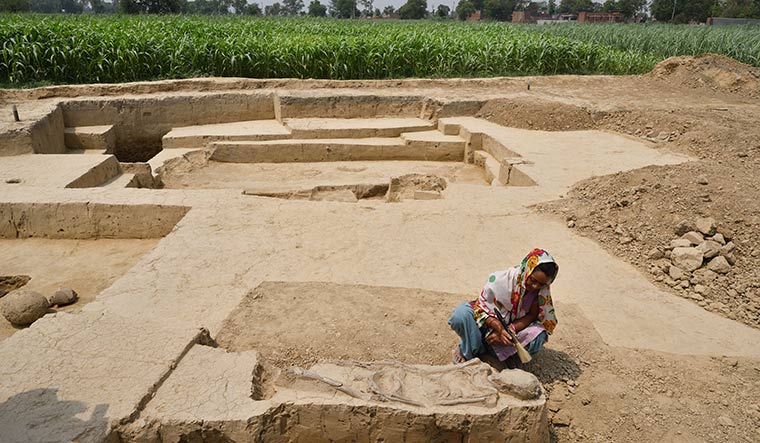The 160-year-old organisation, Archaeological Survey of India, could have its name changed and image rebranded if the latest recommendations of the Niti Aayog report are to be accepted by the Union government.
The working group presented an action plan for heritage management of monuments in the country through better documentation, revenue, restructuring of the ASI, and setting up of new institute of culture. The working was set up, last year, on the instructions of Prime Minister's Office, with Niti Aayog CEO Amitabh Kant, as its chairman.
The report suggested that the nomenclature and branding of ASI be done considering its extended mandate. Among various names that were suggested, the report said Ashmi—Archaeological Survey and Heritage Management of India—was preferred one. “With the acronym ‘ashmi’ in Hindi indicating ‘rock born, hard and strong’, an adjective suitably applicable for India’s everlasting, eternal heritage primarily carved in stone. It also extends to the Hindi term ‘ashmibhut’ meaning fossilized,” the report said.
The Niti Ayog report said that ASI should get whole new branding tagline on the lines of ‘Incredible India’ which made its strong presence. Kant, earlier as an IAS officer, was a “key driver” behind the Incredible India campaign, and now as chairman of the working group has suggested a similar plan.
The new tagline may be used independently or in conjunction with tourism. A few options have been suggested in the report, for example ‘living legacy’ of ‘Incredible India’ or ‘Vatan-e-Virasat’, which should be aggresively marketed.
Among other names suggested for ASI includes, National Heritage Board of India, HASI (Heritage and Archaeological Survey of India) indicating ‘happiness’. For branding, slogans suggested were Heritage Bharat, Bharat ki Virasat, Bhavya Bharat, Heritage India, Virasat India and Historic India.
As the tourism ministry has been responsible for planning and marketing of the various circuits, the report suggested that ASI should come up with various thematic circuits tagging various monuments and heritage sites together.
The working group in its key suggestions said that the National Archaeological Database should be prepared with the help of the ISRO, for which the national mission on monuments and antiquities, which was in operation from 2006-13, be reactivated so that it can complete its previous listing of built heritage and antiquities. It suggested use of latest technologies like photogrammetry and 3D laser scanning for documentation, surveys, excavation and conservation works and LIDAR (light detection and ranging) and drone surveys to document monuments and sites. It suggested studying Rajdharaa project in Rajasthan which was used to document monuments in the state.
The report suggested that conservation plan be prepared for the heritage site before undertaking any conservation works. “A manual for conservation based on the integration of National Policy and John Marshall’s Manual needs to be urgently prepared for use of all ASI circles.”
In a key suggestion, the report said revenues earned from the ticketed monuments should flow back to the parents sites so that it can be used for development. Currently, all the revenue earned at the ticketed monuments go to the Union government. It also suggested adopting a PPP model at revenue generation, and each ASI site to be treated as separate profit centre.
As one of the key mandate of the working group was to suggest upgradation of the Archaeological Survey of India, it suggested the heritage organisation should that revive its 'underwater archaeology' unit and strengthen Epigraphy section. “ASI needs to draft an approach paper on landscaping and water hydrology and recreation of traditional water systems.”
The report suggested better pay scales, separate archaeological cadre, and hiring of experts at market rates to redefine the working of the ASI. For better management of monuments, it suggested dedicated cell for special projects on the lines of ASI project in Cambodia.
For better skill development, the report suggested that an Indian Institute of Culture (IIC) be set up as a premier national institution for education, training and skilling manpower in archaeology, conservation, museology, archives to be located at the Pandit Deendayal Upadhyaya Institute of Archaeology, Greater Noida.



